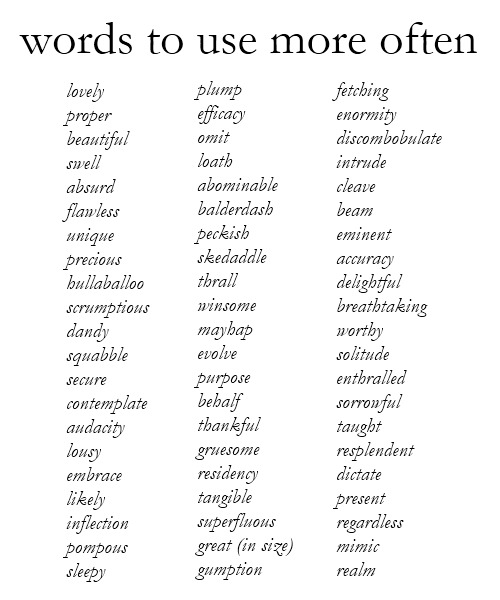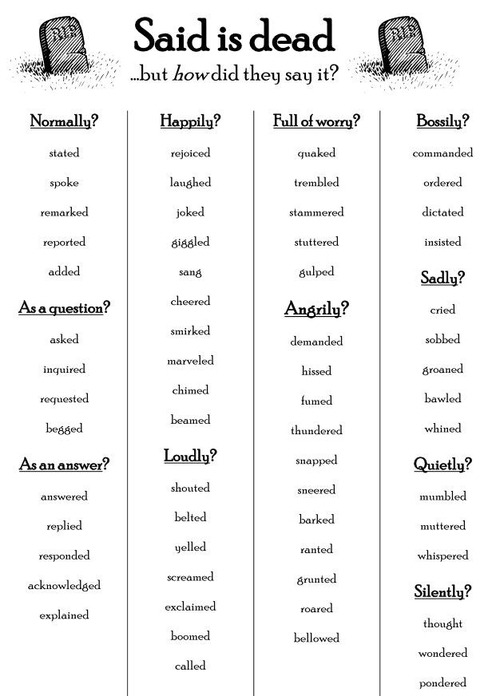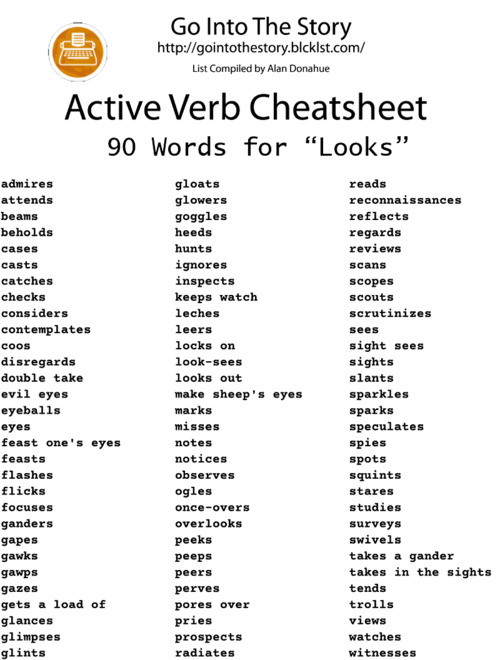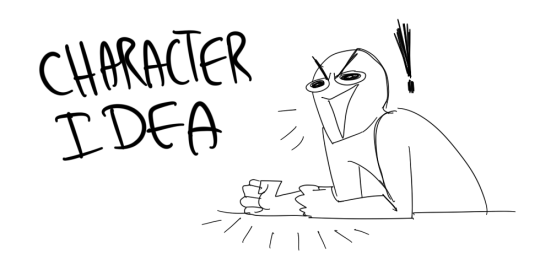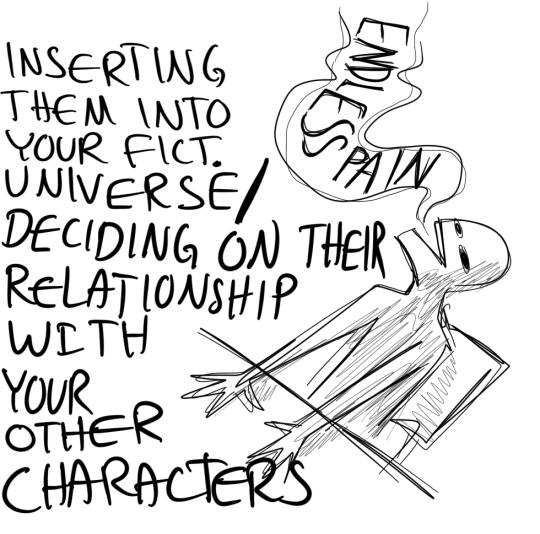Don't wanna be here? Send us removal request.
Text
Seven Deadly Fight Scene Sins
Below, we’ve listed some common sins that can detract from enjoyment of a fight scene. As always, rules are made to be broken. It’s also worth understanding something, before you try though.
Why Are You Thinking? We Should Be Fighting!
When working on a fight scene, it’s best to write the sequence as it happens on the page. This way, the action is immediate and in the moment. A common mistake, though, is for the character to become distracted even when it’s just within their head. The author may insert thoughts, description, and even dialogue that slow or pad out the action. This can be very frustrating as it often can lead to the feeling that both the author and the character in question are not taking the fight seriously. After all, if the character does not believe they are in serious jeopardy then how can the reader?
Commonly, this may happen during rewrites or if the author gets distracted with making sure everything is clear. However, it’s also an easy mistake to correct. So, just be sure to stay on point and when you read over your fight ask yourself: does this feel like it’s happening right now? If not, cut the fat.
Talking as a Free Action
Fights are like sprints, they are moments of extreme physical exertion that leave us breathless with little room for chit chat. Lengthy, chunky dialogue inserted as two characters pound away at each other is unfortunately as common as it is unrealistic. Whether it’s Chris Claremont’s Wolverine flying through the air as he delivers a paragraph of text or two characters mouthing off witty banter in the middle of a sword fight, talking while entertaining can quickly become the means by which a fight sequence devolves into the ridiculous. As we, the authors, are not experiencing the fight sequence as it happens, what the characters are physically experiencing can be easy to forget.
Here’s a solution that both Starke and I recommend: talk before and talk after. If your characters must talk during limit yourself to ten syllables. That is not ten syllables per character, that would be too much. Instead, limit yourself to ten syllables maximum for all your characters who are fighting. This way, you can easily count it out and you’ll know that the dialogue itself is serving it’s place in the scene without detracting from the sequence.
Five Minutes is a Long Time
As authors we have a tendency to exaggerate for effect and those of us who are inexperienced at a specific kind of physical exertion have a serious tendency to overestimate. For reference, five minutes is a long time. It is a devastatingly long time. The average street fight, by comparison, only lasts twenty five seconds. A fight can end in seven seconds. The maximum of movements that even an experienced combatant can make before simply failing due to overwhelming exertion is eight. The more unequal the fight between two individuals, the faster it ends.
Characters who overestimate like this, especially those who are supposed to be experienced, tend to look very foolish and it undercuts the sequence. There’s a limit to how long a fight can go before the reader starts to lose interest and to sell your characters, it’s important to make the attempt to be accurate.
However, translating time into text can be very difficult and while we can count a single page as a minute in a movie script, the same cannot be said for a novel. A simple solution is to limit yourself by counting it out through the number of moves instead of guessing how long. The longer the fight extends, the more exhausted a character is going to become. If you limit yourself to eight moves per character, then you will get into the acceptable range for keeping your sequence punchy and quick.
Remember, the wider the experience gap, the faster it will end unless the experienced character has a reason to keep it going.
That’s Not Anatomically Possible
We could also label this as “spontaneously develops third arm”. This can happen during rewrites or through the introduction of a new weapon or when the author doesn’t stage it out or think the physics of the scene through entirely. Sometimes, it’s an attack that would do no physical damage were it to connect such as spinning and kneeing (a knee takes it’s power from the body driving forward to the low-line of the body or upwards into the body, it can be lifted to generate a better, quicker spin for another attack such as a spinning backfist, but is useless on it’s own, it is also a single action movement) or multiple actions happening simultaneously like two characters in a death grip punching each other without releasing their hold and you have a sequence that sounds good but makes no sense when your readers step back to put it together.
The best way to solve this is by finding a partner to walk you through it physically even if it’s just bashing at each other with nerf swords. Yes, you may feel a little silly and foolish but the more work you put into it, the better the result will be. It’s important to get a good grasp the physicality and body positions in the scene as you’re describing it and this can be difficult to figure out in just your imagination.
Intuition Does Not Equal Skill
Intuition is nice, and so is “natural talent”, but unless your character is a several thousand year old immortal or a character who is continually reborn and acting on lifetimes of combat experience, then neither of these are a substitute for actual skill. Skill is empirical. It is earned through time and practice, we don’t come out of the box knowing exactly what is needed. When this happens in a novel, it is a plot contrivance and a cheat by the author to push the character along without having to say “how” they know. In short, it’s lazy. Worse, it promotes that unfortunate idea that skill is just something some has as opposed to the reality that it can be gained by anyone who puts in the required time and effort. This promotes the idea, especially for young readers, that if they do not grasp a concept quickly then they should just give up because the only skills worth having are those that come easily. Natural is not always better and no matter how much talent someone has, it will be nothing if they don’t develop that talent into a skill that they can use.
Don’t use intuition to cheat your way past a concept that you cannot adequately explain, instead dedicate time to understanding the profession or skills you are trying to include into your character. Yes, it will take longer and may be confusing in the beginning but the end result will be much better.
Detail? What’s that?
When you write your sequences, it’s important to be clear. If the reader is not grounded in the sequence, is not experiencing the sequence, and following the sequence as it happens then the grand fight or moment in the book will become meaningless. Detail can lend clarity to the image the reader imagines and make the sequence carry through. If your characters strike at the body consider where they are striking to as opposed to just having them throw attacks blindly. Have them focus on their opponent and visualize the body, break the body down into pieces: head, throat, shoulder, arm, wrist, hand, stomach, etc. When a character is knocked back, consider what they do. Do their feet slide? Do they stumble? Think about the body and how it reacts. Think about the environment and how they are affecting it. Be specific and be clear with the sensations you are eliciting.
Make it easy to follow. Read over the sequence with your “new reader eyes”, if you have to reread it a few times to get an understanding of what is happening then a rewrite may be necessary.
Don’t Call Your Shots
Whether your character is announcing to the villains the exact way that they plan on defeating them or calling out the name of their super special technique before they unleash it, don’t do it. It may feel badass to have the character tell someone exactly how they are going to be defeated and then follow through, it tends to ring hollow. One: it discounts the ability of the enemies to adjust to the hero’s plan and react accordingly (which hurts their believability, why should I care if they can be dispatched so easily after being told what is about to happen?) and two: unless the hero is lying or bluffing, they look stupid, overconfident, or both. After all, they just told me what’s about to happen. Unless you’re working within the long anime tradition of announcing a special attack, it just feels like a waste of breath.
Respect your villains and antagonists enough to not short change their intelligence for the sake of trying to make your protagonist more often. Study up on badass boasts and figure out what makes them work. Hint: it’s usually the humor beat afterwards such as Marcus in Babylon 5 when he says “In five minutes no one at this table will be left standing, five minutes after that, no one in this room will be left standing” and after he does so, collapses and says “Great, now I have to wait for someone to wake up” or playing off Superman’s reveal that he constantly holds back his powers for fear of hurting someone in the finale of Justice League Unlimited in the final battle with Darkseid when he says “But you can take it, can’t you, big guy? So, let me show you just how powerful I really am.” (He also doesn’t succeed, but it’s a great moment). However, neither of these outline exactly what they’re going to do but both come with the threat that it’s gonna be awesome.
Say it without saying it, leave room for excitement and the thrill of seeing just what a character will do instead of them telling us what they’re going to do.
-Michi
4K notes
·
View notes
Note
Hey, can you give me some advice on writing a horse ride and a sword fight for my WIP? I have no idea what any of technical terms are!
(Hey there! I certainly can!
Terms and phrases for riding horses (with a fight scene in mind!)
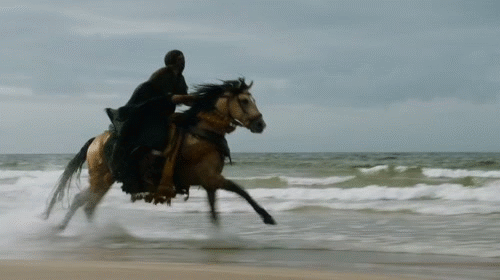
Walk, trot, canter, gallop - paces.
Halt = asking the horse to stop
Aids = instructions given to the horse, by the rider
Mount/Dismount = to get on/off the horse
Vault = to swing onto the horse, generally whilst it is moving
Contact = pressure/’feeling’ on the reins, between the riders hand and horses mouth. (used to direct the horse - see a little more about using the reins in this post - on writing horses in your WIP)
Near side = left side of horse
Off side = right side of horse
Hindquarters = horses rump/back end
Lame = A limping horse
Sound = a horse that isn’t lame
Rein back = asking the horse to step backwards
Half -Halt =when the rider asks the horse to pay attention a little
Transition = When the gait changes, (walk to halt, trot to canter, etc)
Rear = When a horse goes up on its hind legs
Buck = when a hors eputs its head between its front legs, and throws its hind legs up
Baulk = When a horse hesitates, or refuses to go forward
Spook = When a horse shies at something, and jumps
Haute Ecole = an ancient method of training horses for war
Barding = Armour used on horses. (It’s old timey knight stuff, but it might be what you want. More about that here)
Sword fighting terminology
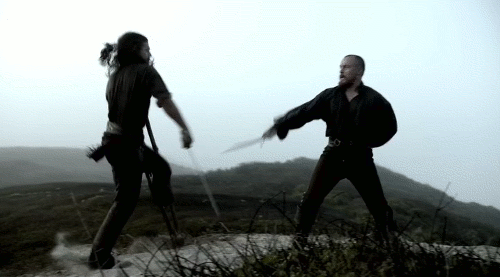
(!!! I’m the first to admit I know next to nothing about swordfighting, only what I’ve researched for my own WIP. This terminology is from here, the brilliant Lisa Shea.)
Advance - a short forward movement.Blade - the length of metal that is used for attacking or defending (i.e. the entire metal length beyond the guard).Boar’s Tooth - a guard where the sword is before your front right leg.Deflect - actively change the incoming sword’s speed or angle by hitting it with your own sword (or foot etc)Diagonal - Moving forward diagonally forward - right.Edge - the sharp side of the blade. Japanese blades were typically single edged, while Medieval swords could have both sides sharpened.Empty Fade - Leaping backwards as if to fade but immediately leaping forwards again.Fade - Leaping backwards while leaving the feet in the same orientation.False Edge - the back / trailing edge of the sword, usually the one you do NOT intend to cut with.Front Guard - a guard where the sword is held vertically in front of your face.Full Iron Gate Guard - a guard where the sword is halfway between your right and left legs, angled right.Fuller - a groove running down the length of the blade. I have some books which claim this is a “blood groove” to help blood flow out of an enemy but other books which seem more reliable say it’s to help the sword come out of a body without being caught (it breaks the suction).Grip - the part of the hilt you grip with your hand for control.Guard - a cross-piece on the hilt that keeps your hands safe from your opponent’s weapon sliding down the length of your blade. Also called a cross-guard.Guard - (meaning #2) - a position of safety, a pose where you can defend yourself from attack.Guard of the Woman - a guard where the sword is over your right shoulder, behind your back.Half Iron Gate Guard - a guard where the sword is held before your left leg.Hilt - the generic name for the entire part of the sword near your hands, the part that is not the blade.Long Point - a guard where the sword is straight out from your chest, with your arms extended.Lunge - leaping forwards while leaving the feet in the same orientation.Pass Back - Taking a step backwards by moving your front foot into the rear position.Pass Forward - Taking a step forwards by moving your rear foot into the front position.Pivot - Rotating 180 degrees while keeping the front foot stationary.Pommel - the knobby end of the hilt, used by the second hand for a ball-in-socket pivot point in many moves, or merely as a counterweight in one handed attacks.Posta - the Italian word for guard, as in a position of safety.Posta drill - a series of movements from guard to guard, to help you learn the guards.Retreat - a short movement backwards.Shed - to allow a sword to slide away off your sword without trying to impede / change it, so you are then free to attack or move.Short Guard - a guard where the hilt is at your hip and the sword is pointing up and forward.Slope - moving diagonally backwards back and left.Stance - the position your body is in to be ready for an attack or defense.Step Across - Rotating 180 degrees by crossing the front foot across the back foot and then turning in place.fTail Guard - a guard where the hilt is at your hip and the sword is pointing behind you.Tip - the pointy end of the blade.True Edge - the front / leading edge of the sword, usually the one you intend to cut with.Two Horn Guard - a guard where the sword pommel is at your chest with the sword pointing out.Window Guard - a guard where the hilt is at your ear and the sword points forwards.
___________________________________________________
I hope this is helpful to you!
If anybody has any writing related questions, as always feel free to message me, Aoife @writingguardian
(Also, I’m having a 1000 followers give away! Check it out!)
7K notes
·
View notes
Text
Resources For Writing Sketchy Topics
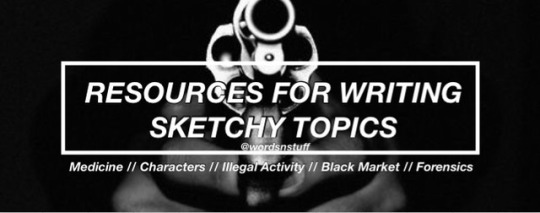
Medicine
A Study In Physical Injury
Comas
Medical Facts And Tips For Your Writing Needs
Broken Bones
Burns
Unconsciousness & Head Trauma
Blood Loss
Stab Wounds
Pain & Shock
All About Mechanical Injuries (Injuries Caused By Violence)
Writing Specific Characters
Portraying a kleptomaniac.
Playing a character with cancer.
How to portray a power driven character.
Playing the manipulative character.
Portraying a character with borderline personality disorder.
Playing a character with Orthorexia Nervosa.
Writing a character who lost someone important.
Playing the bullies.
Portraying the drug dealer.
Playing a rebellious character.
How to portray a sociopath.
How to write characters with PTSD.
Playing characters with memory loss.
Playing a pyromaniac.
How to write a mute character.
How to write a character with an OCD.
How to play a stoner.
Playing a character with an eating disorder.
Portraying a character who is anti-social.
Portraying a character who is depressed.
How to portray someone with dyslexia.
How to portray a character with bipolar disorder.
Portraying a character with severe depression.
How to play a serial killer.
Writing insane characters.
Playing a character under the influence of marijuana.
Tips on writing a drug addict.
How to write a character with HPD.
Writing a character with Nymphomania.
Writing a character with schizophrenia.
Writing a character with Dissociative Identity Disorder.
Writing a character with depression.
Writing a character who suffers from night terrors.
Writing a character with paranoid personality disorder.
How to play a victim of rape.
How to play a mentally ill/insane character.
Writing a character who self-harms.
Writing a character who is high on amphetamines.
How to play the stalker.
How to portray a character high on cocaine.
Playing a character with ADHD.
How to play a sexual assault victim.
Writing a compulsive gambler.
Playing a character who is faking a disorder.
Playing a prisoner.
Portraying an emotionally detached character.
How to play a character with social anxiety.
Portraying a character who is high.
Portraying characters who have secrets.
Portraying a recovering alcoholic.
Portraying a sex addict.
How to play someone creepy.
Portraying sexually/emotionally abused characters.
Playing a character under the influence of drugs.
Playing a character who struggles with Bulimia.
Illegal Activity
Examining Mob Mentality
How Street Gangs Work
Domestic Abuse
Torture
Assault
Murder
Terrorism
Internet Fraud
Cyberwarfare
Computer Viruses
Corporate Crime
Political Corruption
Drug Trafficking
Human Trafficking
Sex Trafficking
Illegal Immigration
Contemporary Slavery
Black Market Prices & Profits
AK-47 prices on the black market
Bribes
Computer Hackers and Online Fraud
Contract Killing
Exotic Animals
Fake Diplomas
Fake ID Cards, Passports and Other Identity Documents
Human Smuggling Fees
Human Traffickers Prices
Kidney and Organ Trafficking Prices
Prostitution Prices
Cocaine Prices
Ecstasy Pills Prices
Heroin Prices
Marijuana Prices
Meth Prices
Earnings From Illegal Jobs
Countries In Order Of Largest To Smallest Risk
Forensics
arson
Asphyxia
Blood Analysis
Book Review
Cause & Manner of Death
Chemistry/Physics
Computers/Cell Phones/Electronics
Cool & Odd-Mostly Odd
Corpse Identification
Corpse Location
Crime and Science Radio
crime lab
Crime Scene
Cults and Religions
DNA
Document Examination
Fingerprints/Patterned Evidence
Firearms Analysis
Forensic Anthropology
Forensic Art
Forensic Dentistry
Forensic History
Forensic Psychiatry
General Forensics
Guest Blogger
High Tech Forensics
Interesting Cases
Interesting Places
Interviews
Medical History
Medical Issues
Misc
Multiple Murderers
On This Day
Poisons & Drugs
Police Procedure
Q&A
serial killers
Space Program
Stupid Criminals
Theft
Time of Death
Toxicology
Trauma
296K notes
·
View notes
Text
Useful Writing Resources
This is an extensive list of resources for every problem you could come across while writing/planning/editing your novel. Use it well;)
{ *** } Indicate a Highly Reccommended Resource

Planning/outlining Your Work
How To Outline ***
Zigzag Method : Creating Plots
How to Plot a Romance Novel
Seven Great Sources of Conflict for Romances
Let’s talk about brainstorming
Writing Something With Meaning ***
Past Or Present Tense? : How To Decide
Writing Your Work
How To Write A Fabulous Chapter #1 ***
How to Build a Romance Thread in Your Story
The Big Book Of Writing Sex ***
6 Ways to Get Your Readers Shipping Like Crazy
Romance Writing Tips ***
20 Tips for Writing Lovable Romance Novel Heroes
7 Ways To Speed Up Your Writing ***
80+ Barriers to Love: A List of Ideas to Keep Romantic Tension High
9 Romance Writing Mistakes to Avoid
Removing the Creeps From Romance
19 Ways to Write Better Dialogue ***
50 Things Your Characters Can Do WHILE They Talk ***
How To Write Action And Fight Scenes
10 Steps To Write Arguments
9 Ways To Write Body Language
Writing Good Kissing Scenes
Writing Murders
Create And Control Tone ***
Tips for Writing Ghost Stories
Incorporating Flashbacks
12 Tips To Avoid Overwriting ***
Characters
Behind the Name
Top Baby Names
Looking for a name that means a certain thing? ***
7 Rules of Picking Names
Most Common Surnames ***
Minor Character Development
Writing Antagonists, Antiheroes and Villains
Characters With Enhanced Senses
5 Tips to Help You Introduce Characters
How Do You Describe a Character?
How To Write Child Characters
36 Core Values For Building Character
Questions To Answer When Creating Characters ***
4 Ways to Make Readers Instantly Loathe Your Character Descriptions
5 Ways to Keep Characters Consistent
Character Archetypes
25 Ways To Fuck With Your Characters
Building Platonic Relationships Between Female Characters
9 Simple and Powerful Ways to Write Body Language
33 Ways To Write Stronger Characters
Conveying Character Emotion
How to Make Readers Love an Unlikable Character���
How to Create Powerful Character Combos
How To Describe A Character’s Voice ***
Describing Clothing And Appearance ***
Career Masterpost ***
Creating Your Character’s Personality ***
Character Flaws ***
Editing
DON’T EDIT>>> REWRITE THE WHOLE THING FIRST
Ultimate Guide To Editing Each Aspect Of Your Work ***
Why You Would Read Your Novel Out Loud ***
Grammar and Punctuation ***
How To Write A Captivating First Sentence
10 Things Your Opening Chapter Should Do: A Check-List for Self-Editing ***
Saving Your Story: Finding Where It Went Wrong
How To Condense Without Losing Anything
The Stages Of Editing
Dialogue/Description Balance
3 Proofreading Tips
The Short Story Form
Chapter & Novel Lengths
Anatomy Of A Novel : Chapters and Parts ***
How To Write Chapter After Chapter Until You Have A Book ***
Where Chapter #2 Should Start
Step By Step Guide To Editing Your Draft
Writing Tool: CTRL-F (How And Why You Should Use It) ***
How To Kill A Character
25 Steps To Edit The Unmerciful Suck Out Of Your Story
5 Ways To Make Your Novel Helplessly Addictive ***
Setting
{Setting} How To Describe Setting In Your Stories ***
20 Questions To Enhance Setting
How To Bring Your Setting To Life
Miscellaneous Resources You Can Use In Between
How to Write from a Guy’s POV
The Emotional Wounds Thesaurus
Text To Speech Reader
Compare Character Heights
A Visual Dictionary of Tops
Writers Helping Writers
7 Tricks To Imrove Your Writing Overnight
Work Out/ Word Count : Exercise Between Writing ***
Most Important Writing Tips ***
Let’s talk about diversity in novels
Letting Go Of Your Story
Keeping A Healthy Writing Schedule And Avoiding Procrastination ***
How To Create A Good Book Cover
Write or Die
Tip of my Tongue
Character Traits Form
Online Thesaurus
Writing Sketchy/Medical/Law
Coma: Types, Causes, etc
Tips for writing blood loss
Gunshot Wound Care
Examples of Hospital Forms
Common Legal Questions
The Writer’s Forensics Blog
Brain Injury Legal Guide
Types of Surgical Operations
Types of Mental Health Problems
A Day in the Life of a Mental Hospital Patient
Global Black Market Information ***
Crime Scene Science
Examining Mob Mentality
How Street Gangs Work
Writers’ Block Help/ Productivity
Story Plot Generator
@aveeragemusings ‘ Cure To Writers’ Block ***
50 Romance Plot Ideas
Reading Like A Writer ***
Defeat Writers’ Block
Writing In A Bad Mood ***
Writers Block
When You’ve Lost Motivation To Write A Novel ***
What To Do When The Words Won’t Flow ***
9 Ways To Be A More Productive Writer
“I Cannot Write A Good Sentence Today” (How To Get Over It) ***
Real Writing Advice ***
Info You Need To Know & Words You Didn’t Think Of
A Writer’s Thesaurus ***
Words To Describe… ***
Words & Phrases To Use In Your Sex Scenes ***
Colors (An Extensive List Of Colors)
List Of Kinks & Fetishes ***
List Of Elemental Abilities
inkarnate.com : World Creator And Map Maker For Your Imaginary Setting
Body Language Phrases
List Of Legendary Creatures
How To Write Magic
Hairstyle References
Hemingway : Writing Checker
Body Types: Words To Describe Bodies and How They Move Around
Poisonous Herbs and Plants ***
The Psychology of Color
The Meaning behind Rose color
Types of Swords
Color Symbolism
How a handgun works
How to Write a Eulogy
Types of Crying
Avoiding LGBTQ Stereotypes ***
Superstitions and More
The 12 Common Archetypes
Language of Flowers
12 Realistic Woman Body Shapes
Using Feedback And Reviews
Turning Negative Reviews Into Positive Ones ***
Proofreading Marks : Easy Symbols To Make Reviewing/Feedback Easier ***
Authonomy Teen Ink Figment Fiction Press ReviewFuse
These Are Trusted Critique Sites ;)
95K notes
·
View notes
Text
Ways to un-stick a stuck story
Do an outline, whatever way works best. Get yourself out of the word soup and know where the story is headed.
Conflicts and obstacles. Hurt the protagonist, put things in their way, this keeps the story interesting. An easy journey makes the story boring and boring is hard to write.
Change the POV. Sometimes all it takes to untangle a knotted story is to look at it through different eyes, be it through the sidekick, the antagonist, a minor character, whatever.
Know the characters. You can’t write a story if the characters are strangers to you. Know their likes, dislikes, fears, and most importantly, their motivation. This makes the path clearer.
Fill in holes. Writing doesn’t have to be linear; you can always go back and fill in plotholes, and add content and context.
Have flashbacks, hallucinations, dream sequences or foreshadowing events. These stir the story up, deviations from the expected course add a feeling of urgency and uncertainty to the narrative.
Introduce a new mystery. If there’s something that just doesn’t add up, a big question mark, the story becomes more compelling. Beware: this can also cause you to sink further into the mire.
Take something from your protagonist. A weapon, asset, ally or loved one. Force him to operate without it, it can reinvigorate a stale story.
Twists and betrayal. Maybe someone isn’t who they say they are or the protagonist is betrayed by someone he thought he could trust. This can shake the story up and get it rolling again.
Secrets. If someone has a deep, dark secret that they’re forced to lie about, it’s a good way to stir up some fresh conflict. New lies to cover up the old ones, the secret being revealed, and all the resulting chaos.
Kill someone. Make a character death that is productive to the plot, but not “just because”. If done well, it affects all the characters, stirs up the story and gets it moving.
Ill-advised character actions. Tension is created when a character we love does something we hate. Identify the thing the readers don’t want to happen, then engineer it so it happens worse than they imagined.
Create cliff-hangers. Keep the readers’ attention by putting the characters into new problems and make them wait for you to write your way out of it. This challenge can really bring out your creativity.
Raise the stakes. Make the consequences of failure worse, make the journey harder. Suddenly the protagonist’s goal is more than he expected, or he has to make an important choice.
Make the hero active. You can’t always wait for external influences on the characters, sometimes you have to make the hero take actions himself. Not necessarily to be successful, but active and complicit in the narrative.
Different threat levels. Make the conflicts on a physical level (“I’m about to be killed by a demon”), an emotional level (“But that demon was my true love”) and a philosophical level (“If I’m forced to kill my true love before they kill me, how can love ever succeed in the face of evil?”).
Figure out an ending. If you know where the story is going to end, it helps get the ball rolling towards that end, even if it’s not the same ending that you actually end up writing.
What if? What if the hero kills the antagonist now, gets captured, or goes insane? When you write down different questions like these, the answer to how to continue the story will present itself.
Start fresh or skip ahead. Delete the last five thousand words and try again. It’s terrifying at first, but frees you up for a fresh start to find a proper path. Or you can skip the part that’s putting you on edge – forget about that fidgety crap, you can do it later – and write the next scene. Whatever was in-between will come with time.
135K notes
·
View notes
Text
11 writing problems and solutions
Writing is a craft. It takes time for anyone to learn and improve. But there are some shortcuts you can try, maybe adapt to your own needs. Here are 11 writing problems and their solutions, or hacks.
Too many ideas syndrome
Problem: You have too many equally good story ideas and can’t pick just one to write.
Solution: Select your top 3 favorite stories and write the first scene of all three. If you can’t decide, write the first chapter. The right project will be easier to work with, you’ll have fun writing it, you will be daydreaming about the story, you will love the characters. So, give away three chances instead of one.
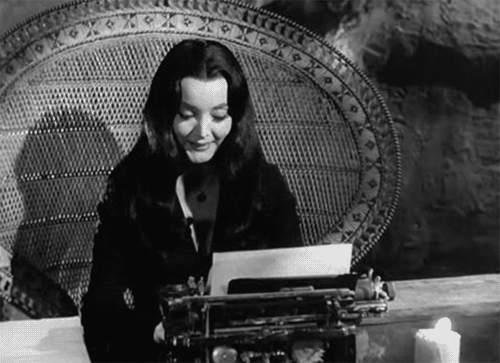
Outline spoiling the fun
Problem: Whenever you outline a story idea, it completely spoils your will to write it. The mystery is gone.
Solution: Instead of outlining the whole story, just make a clear goal on how your characters should end. Will they succeed? Will they fail? Will they be happy? Will they find redemption? Will they be wronged? Decide how your story should end and explore the plot as you go. Remember, no one will read your first draft, so just write.
Lost midway
Problem: If you are a pantser, you might get lost in the middle of the story, especially after the first plot point.
Solution: Give your story an ending. If you know where your characters will end up, you’ll have a better understanding of which routes to take. Always keep in mind how the story will end. Use it as the beacon of a lighthouse to guide you through stormy waters.
Creative block
Problem: You don’t have story ideas. Or nothing you have so far excites you enough for a novel.
Solution: Read a book or watch a movie completely out of your genre. This works like magic, I promise. I’m not a sci-fi person, but Akira has given me more story ideas than any movie and book from my own genre.

Writing anxiety
Problem: You are scared of writing, scared of starting a new story, or just scared of not doing a good job.
Solution: Write a fanfic. No one expects a fanfic to be a masterpiece (although many are). Fanfics are done for fun and for passion. So, write your book in fanfic format. You can even use fandom characters and aus in the process. When the story is completed, change back to original characters.
Editing as you write
Problem: You keep going back to previous paragraphs and editing instead of moving forward with your writing.
Solution: Write your novel by hand. This might sound like a lot of work, but it’s quite the opposite. The white screen of the computer urges you to review, to make it perfect, academic like perfect. The paper however, brings you back to the craft, to the urge of filling lines and pages. Handwriting also gives you the opportunity of sketching and doodling.
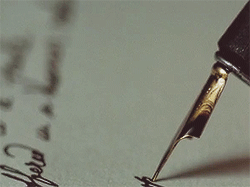
Procrastination
Problem: Tumblr. Youtube. Email. Netflix. Bathroom. Fridge. Bed.
Solution: Go offline. Turn off your wi-fi. Use a device without internet connection. Or, if you keep fooling yourself and turning the internet back on, write your novel by hand. Give yourself a daily hour of internet, but live offline. And if you take unnecessary trips to the fridge or the bathroom, try the pomodoro technique.
Lack of plots
Problem: Nothing relevant is happening, your story looks kind of boring. Or the main plot is too weak for a whole novel.
Solution: Take a few days off. Just relax. When you are ready to go back, read what you have written so far. Maybe you were just tired. But, if the story really sucks, go back to basics. Ask yourself two questions. What type of story am I writing? How will this story end? Follow the answer like a map. Change what needs to be changed, even if you have to delete the whole progress. If you lack plots, don’t add fillers, just go back to basics.
Weak main character
Problem: Your character lacks personality, voice and/or visuals.
Solution: Give your main character three things. An external battle. An internal battle. And an unique feature. The external battle is their goal, what they want to achieve, what they dream about. An internal battle is their fears, traumas, doubts, mental issues, prejudices and triggers to overcome. An unique feature is what sets them apart from other characters, maybe they have piercings, or tattoos, or pink hair, or lilac eyes, maybe they wear neon boots, or a mask, or mittens, maybe they are left-handed, or blind, maybe they have a scar, or a birthmark. Every amazing main character has external battles, internal battles and unique features.
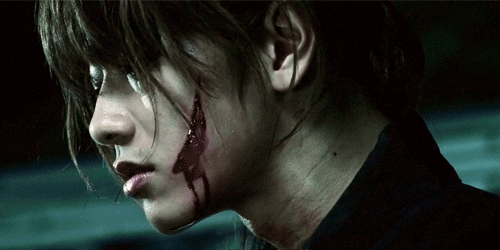
Depression
Problem: You have no will to write. The passion is gone. You feel empty.
Solution: If you don’t have access to medical help, reading is a good way to reevaluate your career and regain your passion for the words. Read lots of books. Don’t worry about writing, just read. Lose yourself in fictional adventures. Read sci-fi, romance, horror, fantasy, crime, family saga, classics, foreigner fictions, fanfics, shorts, poetry. Immerse in literature. Literature can save lives.
Strange dialogues
Problem: Dialogues seem too formal, or too much like the narration, or characters lack individuality.
Solution: Read your dialogues out loud while acting as your characters. You can find a quiet empty room for that. Be an actor. Go for the emotions. Record your acting sections, after all, you might improvise at some point.
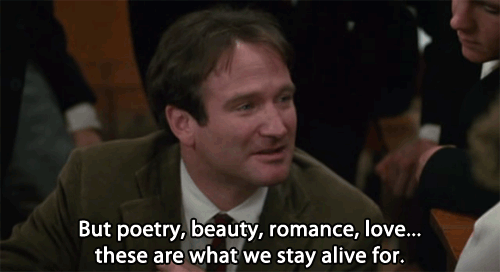
25K notes
·
View notes
Text
How to write a kiss
Rebloggable version, as requested by davrosbro. :)
Oooh! Yes! I love kisses. Kisses are where it all starts ;).
Okay, first, remember that a kiss is much, much more than just lips. It is lips, but also tongues, teeth, eyes, faces, hands, noses, bodies, heartbeats, breath, voice- and most importantly, a kiss is emotions. A kiss without emotion is just wet mushy lips stuck together. Ew. Gross. The most important part of a kiss isn’t the how, but the who- because of the emotions between the two people.
Okay so:
lips- Lips can slide, glide over each other smoothly, or they can be chapped and rough and dry and get stuck on each other. They can match, top-to-top and bottom-to-bottom, or they can overlap, with one person’s top or bottom lip captured between the other person’s lips (yummy). If there is lipstick or chapstick there is lipstick or chapstick flavor, otherwise, lips don’t have a taste (can you taste yours?). Lips also can smack- the sound of two of them coming together or pulling apart, because they’re wet and warm and soft.
tongue- Tongues are always wet, and always warm. They’re very versatile. They can trace over lips, teeth, or another tongue. They can be smooth and graceful or teasing and flicking. When tongues are involved, there is drool. It’s only sexy when you like the person you’re kissing, or else it’s kinda gross. :P
teeth- teeth can clack together awkwardly, or teeth can bite down sensually. A person biting their own lip is cute, a person biting another’s lips is sexy. A person biting gently is sensual, a person biting roughly is sexual.
eyes- Eyes can be wide open with surprise, half-lidded with desire, fully closed with pleasure. Eyes can gaze lovingly, lustfully, wistfully, hungrily, seductively- it all depends upon the emotions of your characters. Have them do whatever you like, but don’t leave them out- give them at least a mention!
faces- Faces are what the lips are attached to. Noses bump, cheeks flush, ears turn red, foreheads either wrinkle or relax. Kisses can leave lips, quite easily, and become kisses on chins, cheeks, noses, foreheads, ears, necks, throats. Kisses on noses or foreheads are cute and adorable, kisses on cheeks are sweet, kisses on chins, ears, and throats are very sexual. And a kiss on the lips can be all of those! <3
hands- Hands are super-important. In order to describe a kiss, usually you want to also describe the hands. Where are they? Does one character have their hand behind the other’s head or back, holding them close? Are they on someone’s shoulders pulling them near, or pushing them away? Fingers brushing someone’s cheek or palms grabbing someone’s ass convey two very different kinds of situations, even if the kiss itself is exactly the same.
noses- Noses are annoying. They easily get in the way, especially for first kisses! People have to tilt their head to one side or the other, and if they don’t, noses bump. I’d only mention noses if a kiss is supposed to be awkward or uncertain or nervous.
bodies- bodies are either close together, or far away. Someone can be surrounded comfortingly by someone’s arms, or terrifyingly trapped by them. Bodies are warm or hot, they are calm or nervous, relaxed or tense. Body language says a lot. Is your character pulling away, or moving closer?
heartbeat- Hearts can beat fast or slow, and that’s about all they can do- but there are lots of reasons why they do! A heart can beat fast with fear or excitement or nervousness; a heart can pound with lust or race with terror or sing with joy. Hearts can glow, cower, or shatter. When you really want to drive the emotions of a character home, mention the heart.
breath- To me, the most consuming part of a kiss is the breath. The air that someone else has just breathed going deep into your lungs is very intimate. Lips and tongues don’t have a taste, but breath does. Each person’s breath tastes different, smells different, and surrounds a person differently than anyone else’s breath. Breath can be warm and sweet, breath can be hot and sexy, breath can be hot and frightening. It is something that is very present and should not be left out. A lot of writers leave breath out. And it’s so important; it’s the most intimate part of a kiss. Someone else is breathing into your lungs, and it’s either heaven or it’s hell.
voice- Voice conveys much, even without words. A voice can groan, whimper, gasp, moan, catch, whine, scream, sigh. Voice can convey emotion powerfully, and while some kisses are silent, usually they’re not.
emotion- Emotion is the most important- and the thing you try not to say. You want to describe it, through all of the things above, so that it’s perfectly clear what your characters are feeling, without you ever using the “feelings words”. If they’re in love, their bodies will lean close, their eyes will smile, their voices will giggle softly. If they’re nervous, their palms will sweat, their noses will bump, their voices will shudder. If they’re afraid, their muscles will be tense, their faces will grimace, their lips will not open. Emotion is the color that you keep inside your mind as you write; it’s the base line that drives the description behind everything else you say.
Wow, that was a lot! Gosh I hope it wasn’t too much! Keep in mind not every kiss has all these things- this is just a list of things to consider when writing a kiss, and based on how long of a kiss you want to make. Keep in mind that typing “they kissed for a long time”…that’s six words, it takes half a second to read, so that’s a short kiss! If you want a long kiss, you need long sentences that make the reader linger.
So maybe to start off, pick three things on the list to describe in your first kiss. Don’t try to do it all- that would be too much for even the most epic kiss. Just pick what’s most important to this particular scene, to these particular characters, and describe those parts along with the lips, and you’ve got yourself an awesome, emotional kiss. <3
128K notes
·
View notes
Text
"I have a new mission for you, Commander"
So … this photo inspired a little drabble.

Keep reading
6 notes
·
View notes
Photo

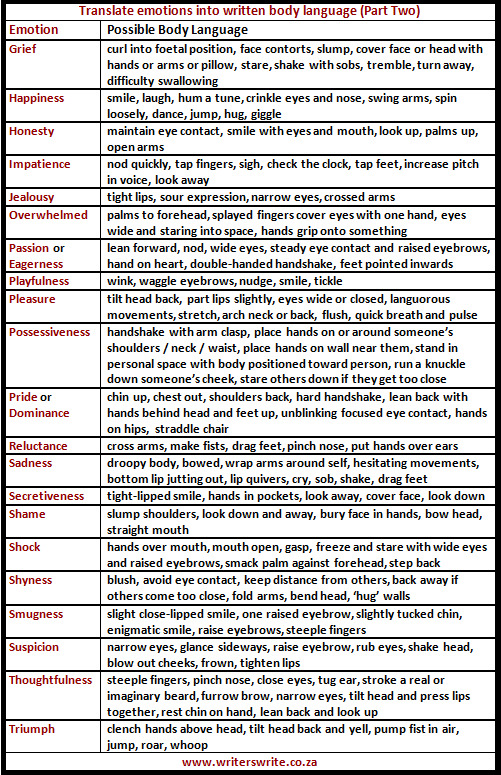
Cheat Sheets for Writing Body Language
We are always told to use body language in our writing. Sometimes, it’s easier said than written. I decided to create these cheat sheets to help you show a character’s state of mind. Obviously, a character may exhibit a number of these behaviours. For example, he may be shocked and angry, or shocked and happy. Use these combinations as needed.
by Amanda Patterson
360K notes
·
View notes
Text
Words to replace said, except this actually helps
I got pretty fed up with looking for words to replace said because they weren’t sorted in a way I could easily use/find them for the right time. So I did some myself.
IN RESPONSE TO Acknowledged Answered Protested
INPUT/JOIN CONVERSATION/ASK Added Implored Inquired Insisted Proposed Queried Questioned Recommended Testified
GUILTY/RELUCTANCE/SORRY Admitted Apologized Conceded Confessed Professed
FOR SOMEONE ELSE Advised Criticized Suggested
JUST CHECKING Affirmed Agreed Alleged Confirmed
LOUD Announced Chanted Crowed
LEWD/CUTE/SECRET SPY FEEL Appealed Disclosed Moaned
ANGRY FUCK OFF MATE WANNA FIGHT Argued Barked Challenged Cursed Fumed Growled Hissed Roared Swore
SMARTASS Articulated Asserted Assured Avowed Claimed Commanded Cross-examined Demanded Digressed Directed Foretold Instructed Interrupted Predicted Proclaimed Quoted Theorized
ASSHOLE Bellowed Boasted Bragged
NERVOUS TRAINWRECK Babbled Bawled Mumbled Sputtered Stammered Stuttered
SUAVE MOTHERFUCKER Bargained Divulged Disclosed Exhorted
FIRST OFF Began
LASTLY Concluded Concurred
WEAK PUSY Begged Blurted Complained Cried Faltered Fretted
HAPPY/LOL Cajoled Exclaimed Gushed Jested Joked Laughed
WEIRDLY HAPPY/EXCITED Extolled Jabbered Raved
BRUH, CHILL Cautioned Warned
ACTUALLY, YOU’RE WRONG Chided Contended Corrected Countered Debated Elaborated Objected Ranted Retorted
CHILL SAVAGE Commented Continued Observed Surmised
LISTEN BUDDY Enunciated Explained Elaborated Hinted Implied Lectured Reiterated Recited Reminded Stressed
BRUH I NEED U AND U NEED ME Confided Offered Urged
FINE Consented Decided
TOO EMO FULL OF EMOTIONS Croaked Lamented Pledged Sobbed Sympathized Wailed Whimpered
JUST SAYING Declared Decreed Mentioned Noted Pointed out Postulated Speculated Stated Told Vouched
WASN’T ME Denied Lied
EVIL SMARTASS Dictated Equivocated Ordered Reprimanded Threatened
BORED Droned Sighed
SHHHH IT’S QUIET TIME Echoed Mumbled Murmured Muttered Uttered Whispered
DRAMA QUEEN Exaggerated Panted Pleaded Prayed Preached
OH SHIT Gasped Marveled Screamed Screeched Shouted Shrieked Yelped Yelled
ANNOYED Grumbled Grunted Jeered Quipped Scolded Snapped Snarled Sneered
ANNOYING Nagged
I DON’T REALLY CARE BUT WHATEVER Guessed Ventured
I’M DRUNK OR JUST BEING WEIRDLY EXPRESSIVE FOR A POINT/SARCASM Hooted Howled Yowled
I WONDER Pondered Voiced Wondered
OH, YEAH, WHOOPS Recalled Recited Remembered
SURPRISE BITCH Revealed
IT SEEMS FAKE BUT OKAY/HA ACTUALLY FUNNY BUT I DON’T WANT TO LAUGH OUT LOUD Scoffed Snickered Snorted
BITCHY Tattled Taunted Teased
796K notes
·
View notes
Text
Helpful things for action writers to remember
Sticking a landing will royally fuck up your joints and possibly shatter your ankles, depending on how high you’re jumping/falling from. There’s a very good reason free-runners dive and roll.
Hand-to-hand fights usually only last a matter of seconds, sometimes a few minutes. It’s exhausting work and unless you have a lot of training and history with hand-to-hand combat, you’re going to tire out really fast.
Arrows are very effective and you can’t just yank them out without doing a lot of damage. Most of the time the head of the arrow will break off inside the body if you try pulling it out, and arrows are built to pierce deep. An arrow wound demands medical attention.
Throwing your opponent across the room is really not all that smart. You’re giving them the chance to get up and run away. Unless you’re trying to put distance between you so you can shoot them or something, don’t throw them.
Everyone has something called a “flinch response” when they fight. This is pretty much the brain’s way of telling you “get the fuck out of here or we’re gonna die.” Experienced fighters have trained to suppress this. Think about how long your character has been fighting. A character in a fist fight for the first time is going to take a few hits before their survival instinct kicks in and they start hitting back. A character in a fist fight for the eighth time that week is going to respond a little differently.
ADRENALINE WORKS AGAINST YOU WHEN YOU FIGHT. THIS IS IMPORTANT. A lot of times people think that adrenaline will kick in and give you some badass fighting skills, but it’s actually the opposite. Adrenaline is what tires you out in a battle and it also affects the fighter’s efficacy - meaning it makes them shaky and inaccurate, and overall they lose about 60% of their fighting skill because their brain is focusing on not dying. Adrenaline keeps you alive, it doesn’t give you the skill to pull off a perfect roundhouse kick to the opponent’s face.
Swords WILL bend or break if you hit something hard enough. They also dull easily and take a lot of maintenance. In reality, someone who fights with a sword would have to have to repair or replace it constantly.
Fights get messy. There’s blood and sweat everywhere, and that will make it hard to hold your weapon or get a good grip on someone.
A serious battle also smells horrible. There’s lots of sweat, but also the smell of urine and feces. After someone dies, their bowels and bladder empty. There might also be some questionable things on the ground which can be very psychologically traumatizing. Remember to think about all of the character’s senses when they’re in a fight. Everything WILL affect them in some way.
If your sword is sharpened down to a fine edge, the rest of the blade can’t go through the cut you make. You’ll just end up putting a tiny, shallow scratch in the surface of whatever you strike, and you could probably break your sword.
ARCHERS ARE STRONG TOO. Have you ever drawn a bow? It takes a lot of strength, especially when you’re shooting a bow with a higher draw weight. Draw weight basically means “the amount of force you have to use to pull this sucker back enough to fire it.” To give you an idea of how that works, here’s a helpful link to tell you about finding bow sizes and draw weights for your characters. (CLICK ME)
If an archer has to use a bow they’re not used to, it will probably throw them off a little until they’ve done a few practice shots with it and figured out its draw weight and stability.
People bleed. If they get punched in the face, they’ll probably get a bloody nose. If they get stabbed or cut somehow, they’ll bleed accordingly. And if they’ve been fighting for a while, they’ve got a LOT of blood rushing around to provide them with oxygen. They’re going to bleed a lot.
Here’s a link to a chart to show you how much blood a person can lose without dying. (CLICK ME)
If you want a more in-depth medical chart, try this one. (CLICK ME)
Hopefully this helps someone out there. If you reblog, feel free to add more tips for writers or correct anything I’ve gotten wrong here.
249K notes
·
View notes
Photo
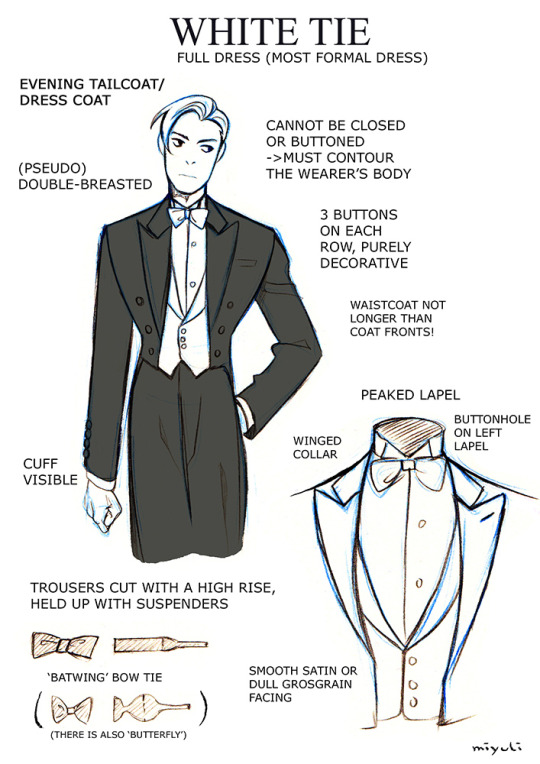

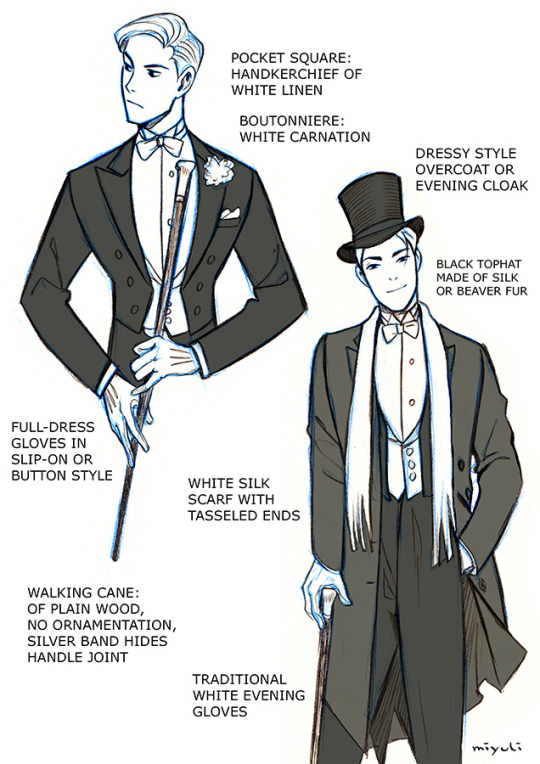
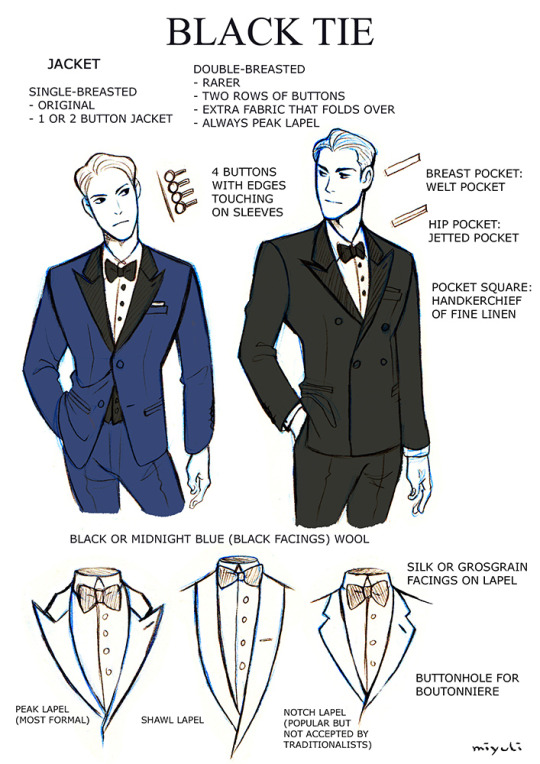

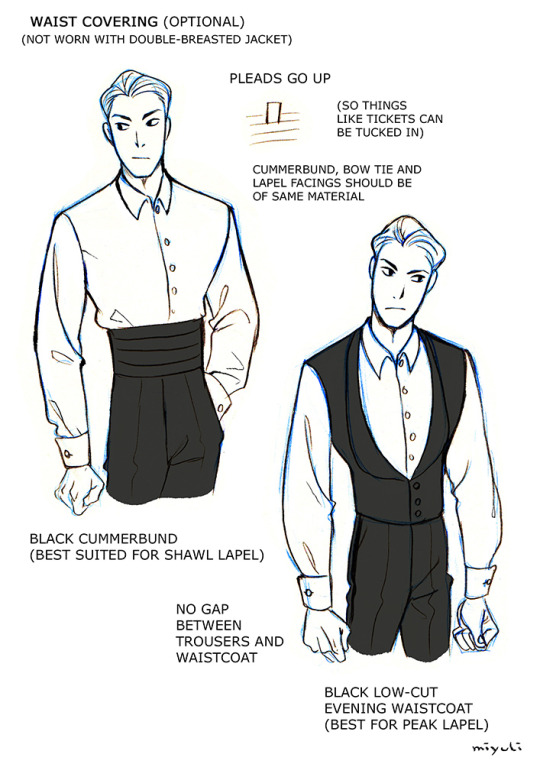
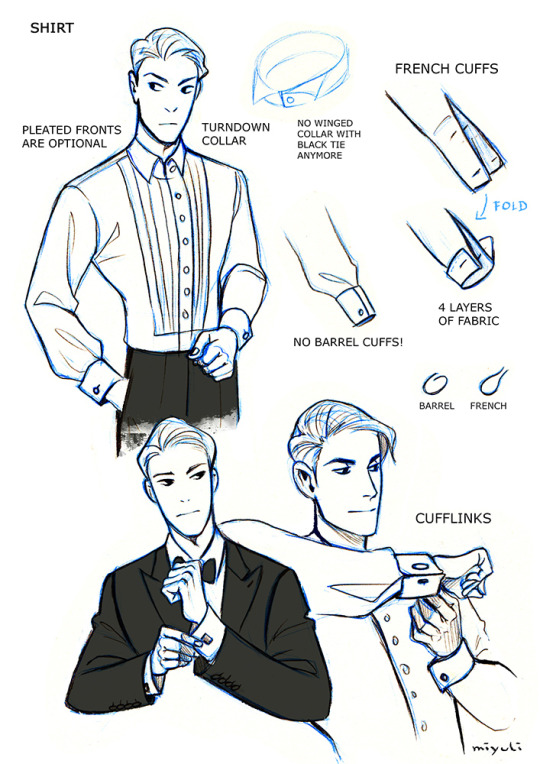

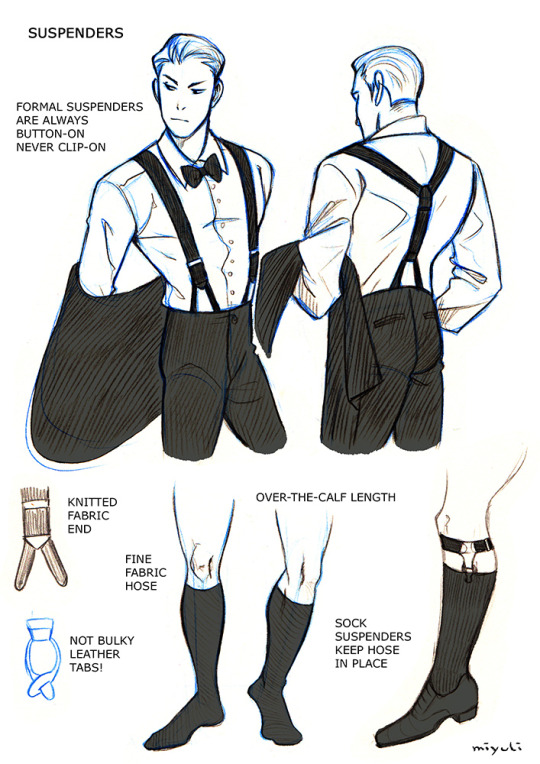
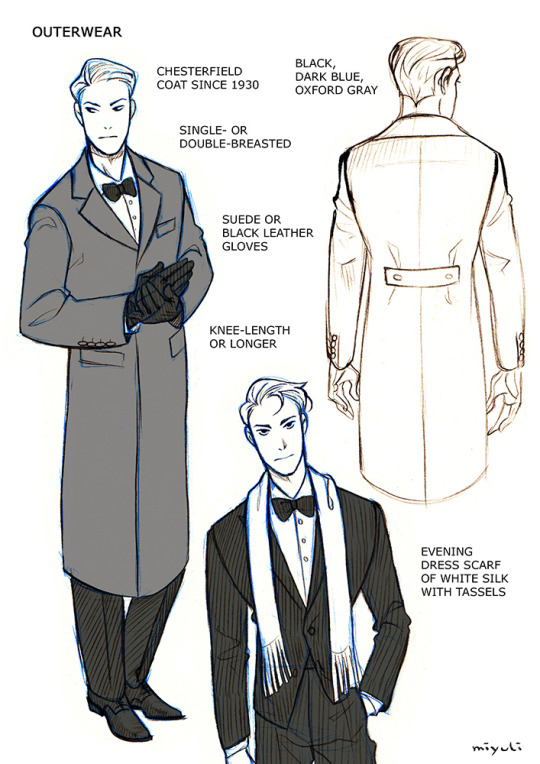
White & Black Tie
11K notes
·
View notes
Photo

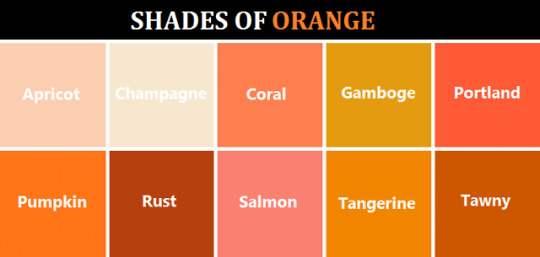

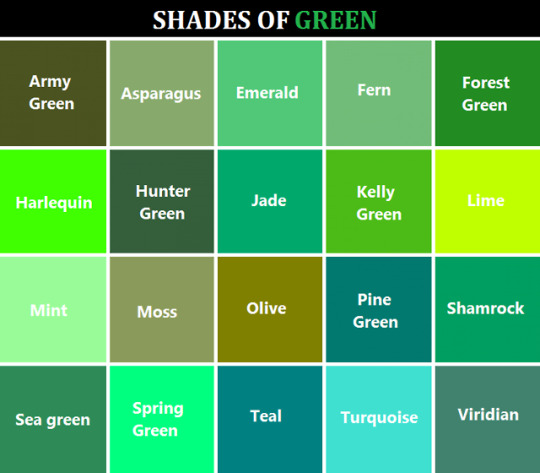


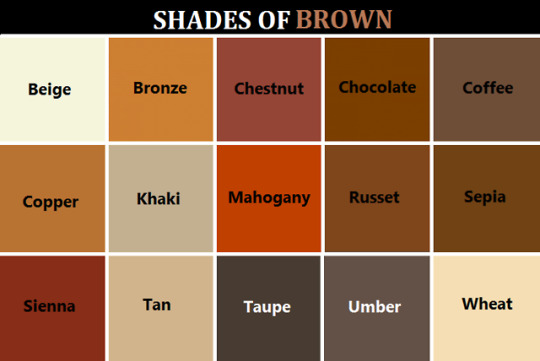
Here’s a handy dandy color reference chart for you artists, writers, or any one else who needs it! Inspired by this post x
324K notes
·
View notes
Text
Everything you (n)ever wanted to know about archery
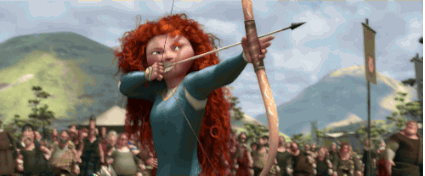
Don’t watch Lord of the Rings, the Hunger Games, or Avatar. At least, not for the archery. Hollywood is stock full of misinformation and misrepresentation about archery. Sadly, not a lot of writers have the opportunity to really delve into the practice. So here is my all you wanted to know primer from how bows are constructed, to lining up and releasing the shot, to treating your friend’s nasty broadhead wound.
Edit: expanded the debunking section.
Keep reading
12K notes
·
View notes
Text
Some words to use when writing things:
winking
clenching
pulsing
fluttering
contracting
twitching
sucking
quivering
pulsating
throbbing
beating
thumping
thudding
pounding
humming
palpitate
vibrate
grinding
crushing
hammering
lashing
knocking
driving
thrusting
pushing
force
injecting
filling
dilate
stretching
lingering
expanding
bouncing
reaming
elongate
enlarge
unfolding
yielding
sternly
firmly
tightly
harshly
thoroughly
consistently
precision
accuracy
carefully
demanding
strictly
restriction
meticulously
scrupulously
rigorously
rim
edge
lip
circle
band
encircling
enclosing
surrounding
piercing
curl
lock
twist
coil
spiral
whorl
dip
wet
soak
madly
wildly
noisily
rowdily
rambunctiously
decadent
degenerate
immoral
indulgent
accept
take
invite
nook
indentation
niche
depression
indent
depress
delay
tossing
writhing
flailing
squirming
rolling
wriggling
wiggling
thrashing
struggling
grappling
striving
straining
1M notes
·
View notes
